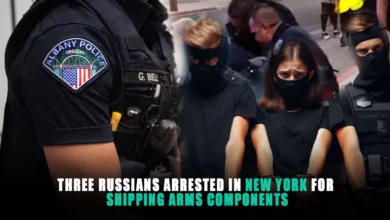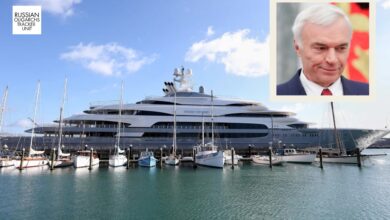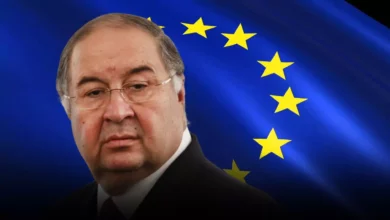G7’s $500B Asset Transfer Proposal: Ukraine’s Path to EU Membership
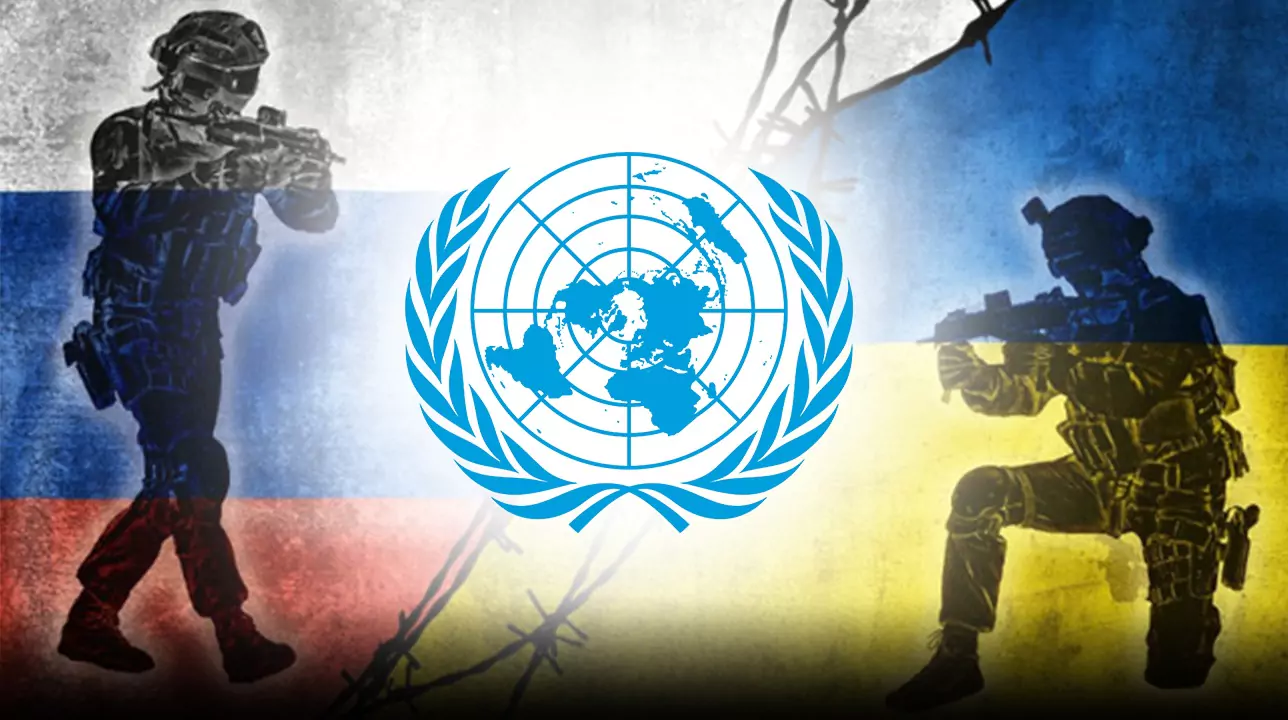
To enable Ukraine to fulfill its dual goals of freeing itself from Russian occupation and joining the European Union, the US and its Group of Seven (G7) allies must transfer about $500 billion in frozen Russian assets, of which at least $300 billion are reserves held by the Russian Central Bank and up to $200 billion are funds owned by sanctioned oligarchs.
By establishing a “finance and lease” program, President Joe Biden, like his wartime predecessor Franklin D. Roosevelt, could get around isolationist resistance in Congress and allow Ukraine to immediately access Russian assets to buy war materiel, finance the budget, and strengthen the private sector in the nation.
Additionally, Ukraine would only be able to access funds that have already been set aside for postwar reconstruction, a task that is growing more difficult and expensive by the day as the war with Russia enters its third year. This is in contrast to FDR’s “Lend-Lease Act of 1941” to Great Britain, the Soviet Union, and the Republic of China.
It is also time for Biden to demand that US Attorney General Merrick Garland vigorously use the long reach of US law to force the transfer of up to $200 billion in oligarch wealth to refinance and rebuild the vital private-sector economy of the nation and that US Treasury Secretary Janet Yellen publicly campaign that Ukraine be granted immediate full drawdown authority on the $300 billion in frozen Russian Central Bank assets.
High-ranking US Treasury officials, including Deputy Treasury Secretary Wally Adeyamo, have already leaked information to the media, which the White House has used to spread the word that assets held by the Russian Central Bank must be moved to Ukraine.
Now is the moment for Yellen to take the lead in advocating for the asset transfer, just as she did when she and Mario Draghi, the prime minister of Italy and the former president of the European Central Bank, orchestrated the first freeze following the Russian invasion on February 24, 2022.
Ahead of a divisive congressional vote to approve $61 billion in financial and military aid to Ukraine, former British prime minister and current UK Foreign Secretary David Cameron became the first G7 official to publicly demand the transfer of Russian state assets to Ukraine during his first Foreign Office visit to the United States on December 9.
According to Research, “Let’s take that money and spend it on rebuilding Ukraine instead of just freezing it. That way, it will be a down payment on reparations that Russia will eventually have to pay for the illegal invasion that they’ve undertaken.” “I’ve read through all the arguments, and nothing has convinced me that this is a bad idea so far.”
After being taken over by Republicans who support “America First,” the vote on US aid to Ukraine is anticipated early in the new year. Meanwhile, the EU package was postponed due to a veto from Viktor Orban of Hungary.
Both former US Treasury Secretary Larry Summers and former World Bank President Robert B. Zoellick concur that Ukraine may transfer and use assets taken from the Russian Central Bank per US and international law.
Significant players in both the Republican and Democratic administrations of George W. Bush and Bill Clinton, respectively, Zoellick and Summers, made it very evident earlier this year that the Biden administration and the G7 have no justification for refusing to give Russian state assets to Ukraine.
The bipartisan Rebuilding Economic and Economic Prosperity for Ukrainians (REPO) Act will give Biden even more authority to transfer Russian assets to Ukraine, according to Senator Chris Coons, who is Biden’s closest foreign policy advisor outside of the executive branch. This was stated in an interview that took place just before the Christmas break.
Harvard Law graduate Zoellick said that although the transfer of state assets owned by the Russian Central Bank is legally simple, there are additional legal complications when it comes to the transfer of assets that have been confiscated from sanctioned Russian oligarchs like Oleg Deripaska, the founder of Alfa Bank and master raider of oil assets, Alexei Mordashov, the steel baron of Severstal, and Rusal aluminum tycoon.
“Bosses of the Mafia”
Speaking at the Carnegie think tank in Washington in September, Ukrainian Prosecutor General Andriy Kostin bluntly declared that organized crime bosses, such as Mexico’s El Chapo or the late Italian mafia capo Toto Riina, should be treated and viewed by the public as organized crime bosses rather than robber barons of the John D. Rockefeller and J. P. Morgan caliber.
According to Kostin, oligarchs from Russia and Ukraine operate using the same methods and mechanisms as groups involved in organized crime, so he does not distinguish between them. Kostin was in charge of Ihor Kolomoisky’s arrest, a well-known oligarch from Ukraine, who was detained for money laundering and corruption in connection with the collapse of his Privat Bank.
Despite having extensive conversations with US Department of Justice Attorney General Merrick Garland, Kostin appeared taken aback that neither Garland nor DOJ representatives asked for Kolomoisky’s extradition on US federal fraud charges.
Dmytro Firtash, a Ukrainian oligarch in the fertilizer and metals industries, has been in Vienna since 2014, where he is battling US extradition orders related to bribery charges involving Boeing. Firtash has acknowledged doing business with Semion Mogilevich, a Ukrainian-born man who is currently living in Moscow and is considered one of the FBI’s Most Wanted.
Garland and Western law enforcement should take up Kostin’s stance on oligarchs since their entire fortune stems from ill-gotten gains from the widespread looting of state-owned property following the collapse of the Soviet Union in 1991.
In fact, on April 18, Bearstone’s Asset Recovery CEE conference in Warsaw, which brought together international lawyers and hedge-fund managers under the guidance of Donald Tusk, Poland’s recently elected “rule of law” prime minister, focused on the reinvestment of Russian assets.
Ukraine’s military industry
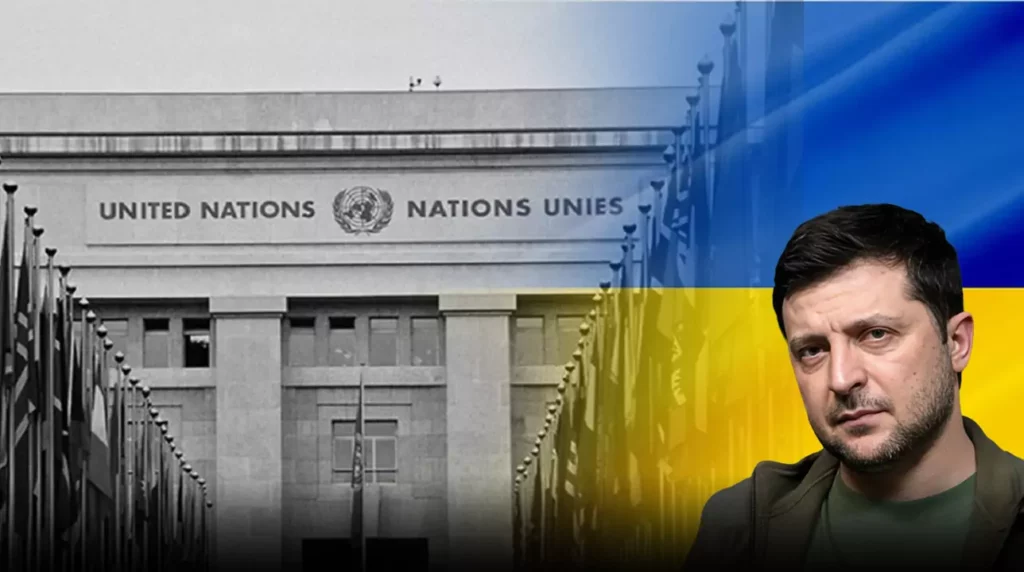
By co-producing its weapons with significant defense contractors like Lockheed Martin, RTX (Raytheon), and L3 Harris, among others, Ukraine would become self-sufficient in the defense sector and be able to directly manage its social spending and private-sector investment requirements. The $300 billion to $500 billion drawdown would also enable the country to manage its defense sector requirements.
Before the annexation of Crimea in 2014, Ukraine supplied up to 40% of Russia’s defense industry; such co-production would enable Ukraine to join NATO right away following the end of hostilities.
President Volodymyr Zelensky of Ukraine has made co-production with large Western defense companies a top priority. He sent his chief of staff, Andriy Yermak, to Washington on December 5-7 to sign as many deals as possible.
Though US defense contractors continue to fleece Ukraine on jobs and in-country investment, Zelensky and Yermak are fully aware of the billions of dollars Lockheed and Boeing invested in Polish industry as part of mandatory offsets in exchange for the Polish government acquiring F-16s and 787-9 Dreamliners.
When none of the top executives from the major US defense contractors, including Chris Kubasik of L3 Harris, David L. Calhoun of Boeing, Gregory Hayes of RTX, and James Taiclet of Lockheed, met with Zelensky during his crucial trip to Washington on December 11, the delegation from Ukraine was incensed.
The lack of US defense CEOs, according to John Herbst, the US ambassador to Ukraine in the final years of President Leonid Kuchma’s administration, is a result of national security adviser Jake Sullivan and US Secretary of State Antony Blinken’s warnings to US defense companies against making direct investments in the Ukrainian arms industry.
In their meetings with Zelensky at the Oval Office, Biden has openly expressed his support for US defense spending in Ukraine’s defense industry.
Through project finance or equity investments managed by the US International Development Finance Corporation (US DFC), the European Bank for Reconstruction and Development (EBRD), or the World Bank’s International Finance Corporation, up to $200 billion in oligarch assets can already be used to re-energize the Ukrainian private sector.
Much of the money could go toward rebuilding Sweden SKF’s ball-bearing plant in Lutsk after Russia destroyed it earlier this year, or it could go toward financing private sector war risk insurance through the World Bank’s Multilateral Investment Guarantee Agency (MIGA).
Sadly, a lot of positive financial news about Ukraine is missing from the Financial Times and Wall Street Journal. Examples include the $480 million in funding and investment provided by the US DFC, EBRD, and IFC in Ukraine’s MHP SE poultry concern or the M&A negotiations between one of the top three US private equity firms (Blackstone/Carlyle/KKR) and Ukraine’s massive game-hosting company, Boosteroid.
The Benetton family owns Atlantia Infrastructure Group, and Blackstone recently purchased a 40% stake in it. The Ukrainian government is actively courting Blackstone to take part in upcoming airport and highway privatizations.
The immediate transfer of Russian Central Bank and oligarch assets to Ukraine would kill any hope by President Vladimir Putin of a possible victory over Ukraine, especially ahead of presidential elections in March when he will be required to travel to restive Russian regions and occupied Ukraine.
However, the asset transfer would also create a privileged forum with the G7 for any future peace talks between a post-Putin Russian government and postwar, liberated Ukraine.
In the case of a permanent stalemate, Russian assets would be frozen for decades or more, and even longer in the case of Bolshevik Russia, where it took more than 70 years to repay Czarist Russian Railway bonds.
Biden’s and the G7 “finance and lease” program would finally allow Ukraine to focus on its dual mission of ending the Russian occupation and its stated goal to become a full member of the European Union by end-2025 after becoming an official EU ascension candidate with Moldova and Georgia on December 14.





